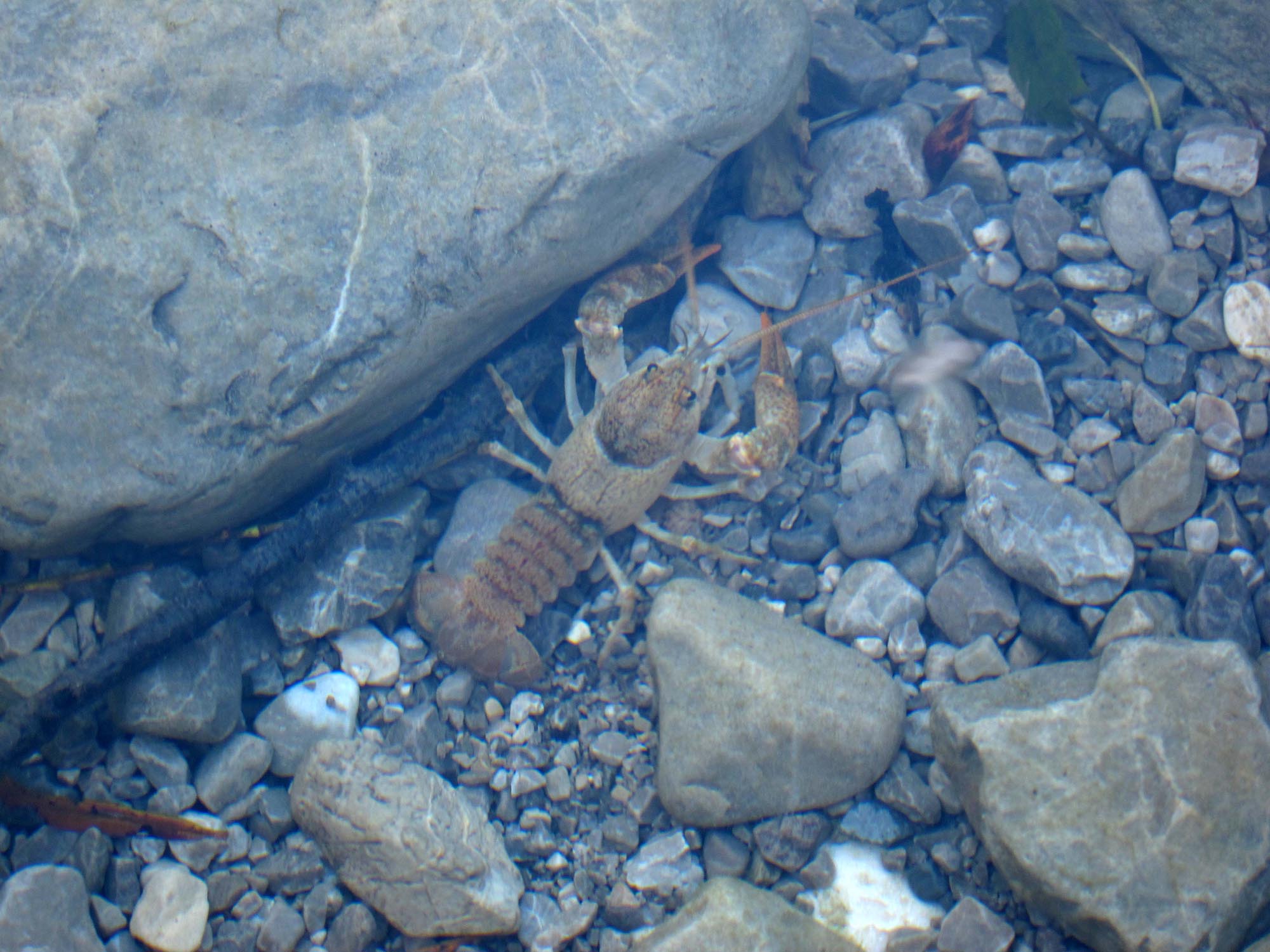
The Stone crab (Austropotamobius torrentium) turns night into day. The up to 8 cm long stone crabs are protected by the Tyrolean Nature Conservation Ordinance and are among the crayfish in the Tyrolean Lech Nature Park. The body proportions of the stone crayfish resemble those of the Noble crab (Astacus astacus), a crayfish species native to Central Europe. However, the stone crayfish is much smaller and has only one bar behind the eye and not two in a row like the noble crayfish. The body colour is beige-brown up to a bluish or greenish brown. The undersides of the strongly developed claws are beige to white. Like all other freshwater crayfish, the stone crayfish has flattened terminal limbs that form a tail fan.
They colonise Cold, partly very small streams and Shore areas of cool, higher lakes. In summer, the waters must reach at least 8 °C, but must not rise above 23 °C (optimum temperature between 14 - 18 °C). The waters must also be clear and clean. Because the stone crayfish is very site-faithful, it is suitable as a leading species for determining the condition of the water. In the mostly gravelly substrate, it builds small caves under stones or deadwood, which serve as living tubes.
The stone crab prefers small aquatic insects and also eats fallen leaves, diseased fish and carrion, thus providing a kind of water police for the maintenance of the water bodies.
October to November is the mating season for stone crayfish. The female carries the eggs on her hind limbs until swimmable larvae hatch in June.
In Austria, the stone crayfish is one of the most common native crayfish, yet it is already classified as endangered in Austria's Red Lists